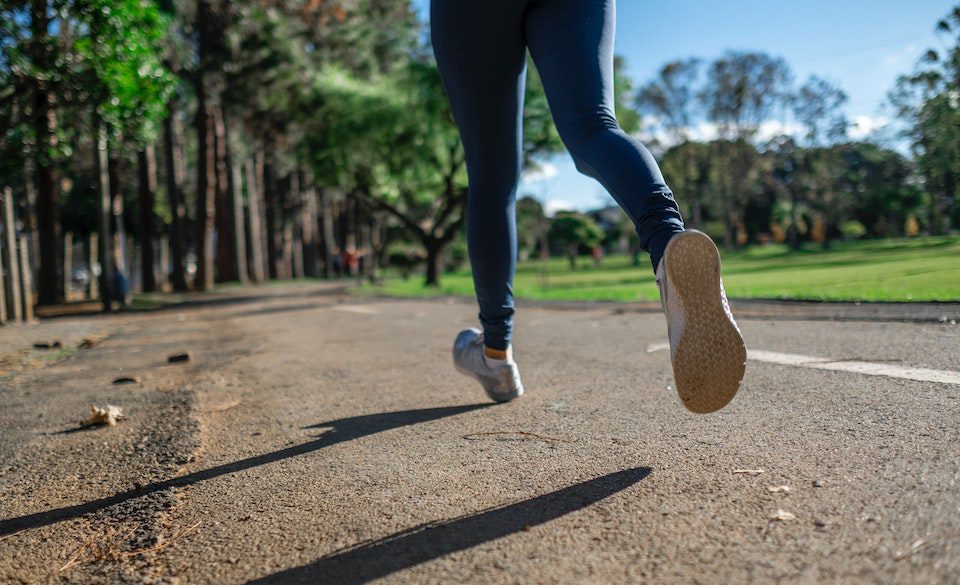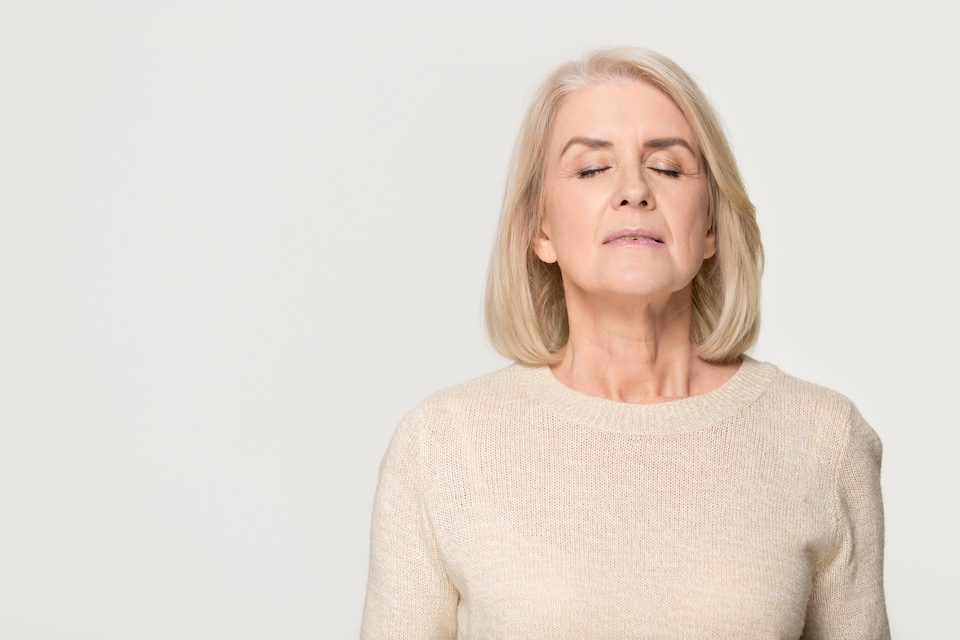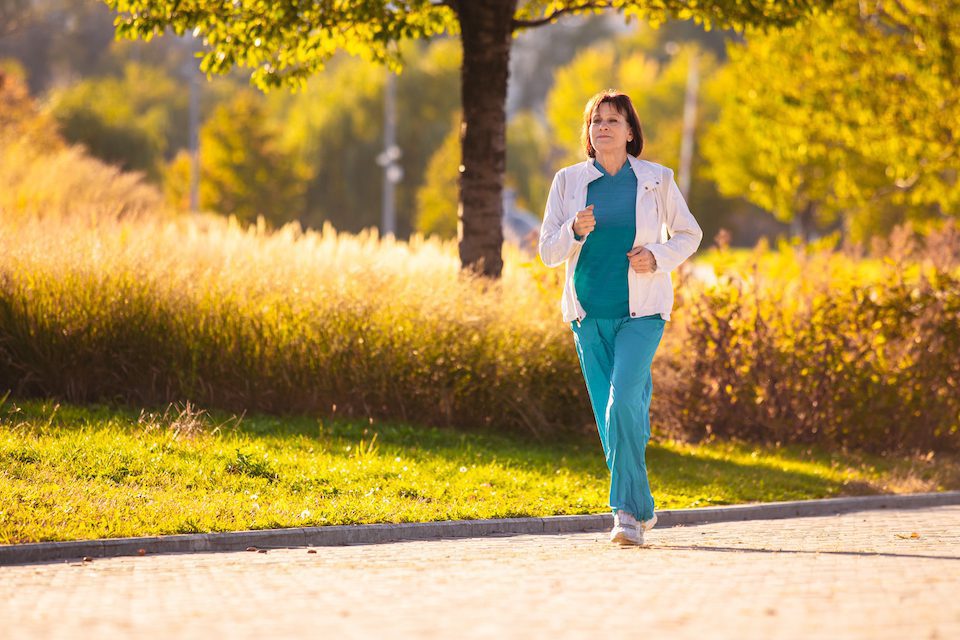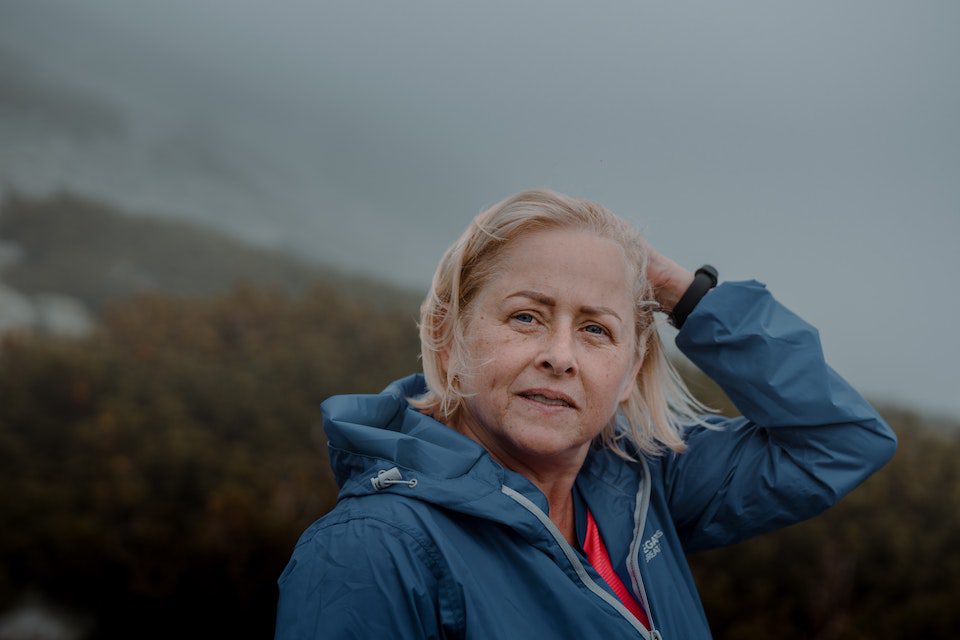Last updated on March 9th, 2025
Featured image: by Gantas Vaičiulėnas on Unsplash
Steps to Protect Yourself and Plan Ahead for Travel
by Carolyn Ray
At age 17, Lorna Selig was attacked. She did what many women have. Nothing.
“I didn’t know what to do. I didn’t have a voice; I didn’t know how to manage it and so quite honestly, I did nothing. I told no one.”
Years later, when she was 25, Selig was working in marginalized communities where she saw many children, teens, young women, mothers, aunties, and grandmothers who also had been victimized in some way.
“So much of the time, it was this systemic, almost repetitive, historical kind of violence, an assaultive way of living,” she says. “I started making stuff up with these women and said, ‘Hey, let’s talk about how we can defend ourselves’ and, ‘Let’s all take a course together’ and ‘Let’s do some research on where’s a really, really great place to grab and how do we do that if we are attacked.’”
Oddly enough, despite her intentions, she was attacked again. “I was in a downtown neighbourhood and I was assaulted again,” she says. “This time, I thought, something has got to be different.”
Over the course of the next few years, she discovered a class that was being facilitated by her local city police force. She realized it was exactly the framework that would make a difference.
“I phoned the woman up that owned the company and I said, ‘I love you so much, I want to come work with you!’ she explains. Lorna worked and trained with her for about 10 years. Eight years ago, she offered Lorna the company, which is now called Safe4Life, specializing in self-defense and personal safety training.

Self-defense expert Lorna Selig
On April 7 and 15, Lorna joined me to offer two sessions on Self-Defense for JourneyWomen. These sessions received excellent feedback from attendees.
What follows is an edited version of her advice provided on the April 15 session. You can also watch the video using the link below.
Women must take charge of their own safety
As CEO of Safe4Life, Lorna has been teaching self defense for nearly 17 years. She believes education and information is the best way to reduce the incidence and statistics of assault and victimization.
“As women, we are often vulnerable and must take charge of our own safety – we are the only ones who truly can,” she says. “Yet we hesitate to remove ourselves from a situation or establish our boundaries. We must make a commitment to honour those moments when we don’t feel safe and protect ourselves with speed and vehemence. It’s important to show up, take charge of your space, own your space, be confident and show up as your biggest self.”
Four things that can avert personal harm
Here’s a scenario to consider: Imagine you are in a country – any country – on your own. You’re leaving dinner, you’re walking down the street and as you round the corner to head up the hill back to your accommodation, you’re jumped, you’re grabbed. You’re caught in somebody’s grip and down you go face-first onto the gravel, onto the pavement. What do you do?
“This person doesn’t want your phone, doesn’t want your backpack, they want you,” Lorna says. “There are four really, really simple basic things that you can do right now in that moment that can save your life.”
Whether you’re in Nicaragua or Dubai or India or downtown Calgary or in the middle of Hollywood, here are four skills that could make the difference.
1. Find your voice: Scream, yell and shout

Photo by ABy TeodorLazarev from Shutterstock
Lorna says the first thing you should do if you’re attacked is to scream, yell and shout. Anything to create chaos, and noise to attract attention. Yelling and screaming lets people know that something is going on in that environment and you need help. Just as importantly, yelling also changes the mindset of the attacker, of the perpetrator.
“When we use that element of surprise and shock towards them, it shifts their plan,” she says. “It changes their mind about whether or not you are an easy target, All of a sudden their mind shifts from, ‘Oh, here’s a nice little victim’ to, ‘Holy crap, I didn’t expect that.'”
Yelling and screaming also elevates your power. It elevates your authority and your energy in that situation. An attacker sees themselves as somebody who is stronger, more powerful, in charge, in control of you. This is where you are going to get the energy to change that person’s mind and get out of that situation.
Q: Some women are older or may have mobility issues perhaps or don’t feel they have the physical strength to do some of the things that you’re suggesting. What kind of advice would you have for them?
Lorna: Always you’re going to be shouting, always, and the louder you can shout the better off and more protected you are. It doesn’t matter if you’re in a chair, in a walker, we’ve all got the power inside of us to shout louder than you ever thought you could shout. For us to shout – we need to practice it. Get in the shower, turn the water on, crank your stereo up and shout as loud as you possibly can.
2. Fight like a woman

Photo by Shutterstock
Fighting looks different for everybody. Fighting might mean using your elbows, hitting with your fists, grabbing that groin and twisting, flinging back with your head, kicking with your feet.
“Whatever it is that you need to do, your job in that situation is to create perpetual motion,” Lorna says. “Yell and scream at the same time as you’re swinging. You’re swinging, you’re hitting, you’re getting yourself rolled around in that situation, you’re pounding on somebody’s face. You’re grabbing, you’re pinching, hitting somebody in the nose. My favourite: Giving somebody a shot to the throat.”
“Never ever, ever are we going to stand there and fight, fight, fight, fight, fight, fight hoping to knock this person out,” she says. “That is never to be in our plan. Instead, it’s to do one, two, three, four things so that that person releases his grip on you, and you can run to safety.”
Q: What if you’re stuck in a vehicle?
Lorna: If you are in a situation where the doors are locked, it’s just you and that taxi driver or the bus driver, whoever it is, your strategy is the same. You are going to scream; you are going to fight as hard as you can and scream as loud as you can. You never know who is going to show up and hear your calls.
3. Run like hell!

Photo by Daniel Reche from Pexels
When your perpetrator is set back on his heels, that’s your moment to run.
Run for safety. Safety looks like a place where there’s other people. A store, a restaurant, flagging down a car that’s in the middle of the street, running up to a group of people who may be walking by or in the distance. Run to a house with a light on.
Q: What if you are in an isolated place and there’s no safety in finding others?
Lorna: This is about your instinct and your intuition. If you are putting yourself in a situation where the risks are high, I would strongly suggest that you think that over again. If you are going to a remote location, take somebody with you.
4. Manage your adrenaline

Photo by fizkes on Shutterstock
Adrenaline can mean sobbing uncontrollably, laughing hysterically, wetting your pants, or collapsing, fainting, being dizzy and unable to kind of orient yourself. You need to breathe. Take deep breaths. Although adrenaline causes all kinds of chemical reactions in our body, it’s also a beautiful thing because we don’t feel pain.
Q: What about weapons?
Lorna: Here’s my personal philosophy, I would rather be hurt on my way to safety than hurt being loaded up into the back of a car going God knows where.
Four Keys to Personal Safety
Lorna recommends four keys to personal safety to keep you protected and safe, regardless of where you are in the world, of how you’re showing up and what your environment looks like.
Number One: Be aware
If you’re walking down some street, some busy, crowded street and you’ve got your head in the phone or you’re looking at a map or gazing down at something, you can become a target.
There is someone in the crowd looking for a victim. When you’re not paying attention, when you’re not noticing what’s going on, you’re an easy target.
Make eye contact, briefly
To show we’re not an easy target, here’s the pose: Shoulders back, chin up, eye contact. Brief eye contact.
“This says to a potential perpetrator, ‘I see you. I see you; I see that you’re there. I recognize you and I could identify you,’” Lorna says. “It lets that other person know that you are confident, that you are in the moment and that you are deliberate with your noticing of that person. It’s such a powerful, powerful skill and it’s quick and it’s brief but when you make that eye contact, people know that you are not an easy target. It is so important to do that.”
Put the phone away
Lorna advises that you put your phone away. If you need to stop and check your phone or check your map, find a place that’s not public. Go into a café, go into a store, check your phone, do your stuff, put it away and carry on again.
“You need to be showing up in a way that you’re alert, noticing what’s going on,” she advises.
Q: How do you prevent brief eye contact from being an invitation of wanting to speak to you?
Lorna: You just keep walking. Brief eye contact, move on. Practice it.
Trust your instincts
If you get that feeling of, ‘this doesn’t feel good’, act on it and remove yourself from that situation immediately. You might never know what that was that was causing your response, your body response, your instinctual response. Your intuition never lies.
“Here’s the neat thing about your intuition, it’s like a muscle,” Lorna says. “The more you tune into it, the more you practice it, the more you notice it, the stronger it becomes. So, tune into your intuition, how do you feel about the people that are around you, be aware of them.”
Walk confidently
How do you look when you’re walking in a street market, down a sidewalk or in your own community? If you show up and look to perpetrators like you are weak or vulnerable, then that is how they see you.
“We can be having the worst day ever, but when we are in an environment where there might be risks or threats, we’ve got to put that away and show up confident,” says Lorna. “Brief eye contact, head up. Show people that you are in charge of what’s going on for you in that moment.”
Number Two: Boundaries
It’s absolutely critical to establish your boundaries and maintain them and be strong in protecting them.
“If somebody comes into my boundary; my job is to protect it,” says Lorna. “To protect my boundary, maybe I need to step back. Maybe I need to walk around and go to the back of the line-up. Maybe I need to just step out of that queue or step out of that environment for a period of time. I don’t need to muscle through if I’m feeling threatened or at risk. I’ve got to kind of park my ego when it’s all about my own safety, my own protection.”
Our boundary can be bold, or it can be subtle. “If I’m in an environment where I’m feeling super, super, super at risk, my boundaries are way more solid, right out here, don’t get any closer,” Lorna says.
Q: What if you are in an elevator?
Lorna: So again, our bodies will tell us instantly whether this is a safe situation or not. If you are standing on an elevator and somebody gets on and you instantly don’t feel safe, you need to get off immediately. Even before those doors close or push the next button up on the next floor and out you go.
“No” is a complete sentence
“I don’t care where you are in the world or what language you speak but holding two hands up is the universal symbol for, “Whoa, close enough. Back up, that’s far enough,” Lorna says. “If that person is coming towards me and I’m saying, “NO, STOP”, do you think other people in that environment are going to notice? Absolutely. They’re going to notice my verbalization and my shouting and yelling and tune in. That perpetrator is going to change his mind quite quickly in that moment.”
Lorna says we also need to establish that it’s okay for us to appear rude. We need to stop feeling like we need to take care of somebody else’s feelings.
“How would you react to your child being put in a potentially dangerous situation?” Lorna says. “You would charge in there, grab them and then pull them out, right? We need to remember to do this to ourselves and for ourselves. ‘No’ is a complete sentence.”
Q: Some women are concerned they might look ridiculous if they’re yelling or making a scene.
Lorna: I think about it in terms of the animal kingdom, right, because that’s what we are. Think about what a rabbit looks like when a dog bark at it. That rabbit doesn’t sit there and say, “Oh I think it’s fine. Nah, what could go wrong, I think this will be OK”. That rabbit’s just gone, right? The rabbit doesn’t care if it’s offending anyone.

Photo by Goncharov_Artem on Shutterstock
Number Three: Confidence and Skills
When we show up and are confident and deliberate, people will notice that you are less of a target.
“The reality is that the people who are least likely to be victimized are the ones that are showing up large and showing up deliberately,” Lorna says. “The way that we practice our confidence is in the process of visualization. Make sure that you’re rehearsing this over and over and over again. Run those scenarios in your head, ‘What would I do if,’ you know, or you’re sitting in a café, ‘Oh there’s a car that’s pulled up out there, I wonder what’s going on. What would I do if they came in and grabbed my backpack?'”
She recommends taking a self-defense course or doing martial arts. If you’ve never hit anyone, try it. Or hit something so you know what it feels like.
“You want to know what a punch or a strike feels like before you’re using that skill to save your life,” she says. “You need to practice that before you ever get to a situation where it’s life or death.”
Number Four: Have a Safety Plan
Lorna compares a safety plan to a backpack: As the culmination of all the skills and strategies and thought processes and ways you show up in the world.
“If you ever you need to access that plan, you’ve already thought about it over and over and over in your head,” she says. “Your safety plan needs to include fighting, shouting, running to safety, breathing. Practising that adrenalin response? That’s going to be a huge, huge piece of it should you ever get in a situation where you are fighting for your life and running for your life.”
Having a safety plan eliminates the need for any other kind of personal protection that you might think you need, like bear spray or a personal alarm. Relying on something that is external to being able to fight, run, scream, is that you have to remember to use it.
Lorna recommends that if you want to have an external protection device that you carry in your hand, not in your backpack or your back pocket. With a safety plan, you have everything you need to know and everything that you need to use to protect yourself, starting with your voice.
Quick and easy strategies for fighting back
Lorna has several strategies she recommends for women. Here, we profile four of them: The sturdy stance, the hammer fist, the clamp and the groin.
- The Sturdy Stance
Move your dominant foot back and put your weight on the back hip. When you are punching, when you are striking, when you are trying to fight for your life. You need to punch with your whole body. Not with your arm, with your whole body.
- The Hammer Fist
A hammer fist gives you great range. You can hit somebody in the throat, the nose, the stomach. My favourite of all? We all know it, ladies. It’s the groin.
- The Clamp (or Shark Bite)
Pinch with your whole hand and your fingers and your fingertips. You can use it on a cheek or a throat, somebody’s ear. You can grab their ear with that clamp as hard as you can. Grab their hair and just give it a yank.
- The Groin
If somebody’s got you from the front, what you need to do is make yourself sturdy. Grab onto that perpetrator, onto his shoulders, onto the front of his shirt and pull him towards you and bring your knee up into the groin. He’s not going to be prepared for that and chances are he’s going to hightail it out of there once he’s able to stand up straight.
You have all the skills you need to protect yourself
Whether women are travelling abroad or closer to home, we need to feel empowered and confident. In many countries, there are cultural norms that inhibit women from standing up forcefully and loudly against predators. We can use the power of our own voice to defend ourselves. By having a safety mindset and planning carefully in advance, we can help women prepare for any situation, at home or abroad.
“I love doing this, I love talking to women,” Lorna says. “I love seeing the changes in women when they come away from a course like this, it’s remarkable, absolutely remarkable.”
If you’d like to take a self-defense class, visit Lorna’s website at safe4life.ca.
Read More: Survey Says Women’s Safety is Still an Issue
Watch the Women’s Self-Defense Tips Session From April 15 Below
Learn More on How to Stay Safe While Traveling
Hold The Phone, Grandma: Safe Etiquette for Grandkid Holiday Snaps and Social Media
Suggestions for grandparents when posting holiday photos on social media, particularly when traveling with grandchildren.
How to Stay Safe When You Travel: Introducing our New Cybersecurity Course for Women
To help increase awareness of online safety before, during and after travel, JourneyWoman has introduced a new cybersecurity course with digital safety expert Paige Hanson, just in time for Cybersecurity Awareness Month (October).
With the War in Israel, Where is it Safe to Travel Right Now?
With the war in Israel, should we travel to Egypt and Jordan? How to stay safe and alternatives to travel in other regions around the world.






Great tips here. As a solo female traveller, safety is at the forefront of my mind. Like most women, safety concerns were the reason I was put off solo travel initially. It’s still a concern, but I try not to let my fear prevent me from travelling anymore. Tips like these help to empower us to do things like travelling alone.
I appreciate all you have said. I think all women/everyone should know these “techniques “
I have been teaching them for sometime now.
What a useful article! Thanks a lot! I would add another advice I got in Kenya: When you’re alone in a place you’re not sure of, never look lost, walk confidently, pretend that you know the place and your destination.
This is an important reminder that self-defense is more than just physical techniques; it’s about mindset and preparedness. I always tell my students that understanding and practicing situational awareness is key. Lorna’s advice to use your voice and establish boundaries is something I emphasize as well. It’s not about being aggressive; it’s about being assertive and ready to act decisively when necessary.